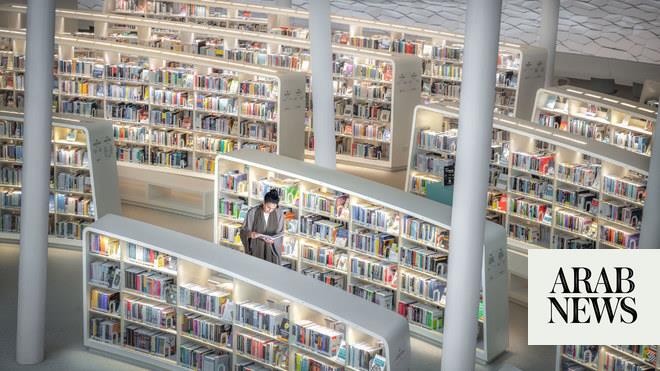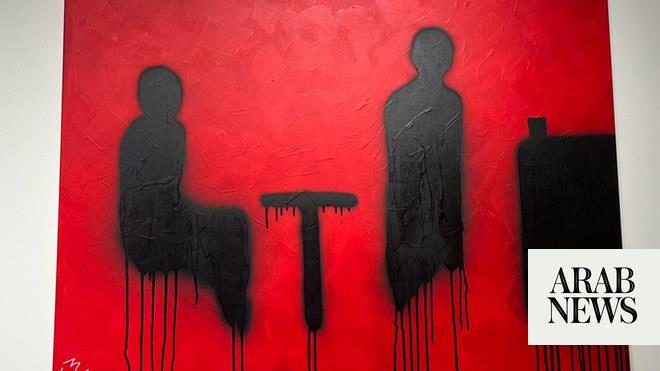
DHAHRAN: With the motto “Inspiring Hearts. Enriching Minds,” the King Abdulaziz Center for World Culture, Ithra, in the last five years has transformed itself into a cultural hub worthy of its name.
For its fifth anniversary, the center said it has hosted more than 3.5 million visitors and 20,000 original programs and activities since opening. To date, Ithra has offered 48 performances, won 26 national and international awards, hosted 20 museum exhibits, engaged 1.8 followers on social media platforms and produced 23 films. Its 9,000 volunteers have donated 664,000 hours.
But it is just getting started.
Ithra, the jewel of the Eastern Province, is a multidimensional space for creative and cultural activities crafted to provide
an enriching experience to local communities and visitors. (Supplied)
Ithra, a Saudi Aramco initiative, was inaugurated by King Salman five years ago, and, that same year, appeared on TIME’s list of the World’s 100 Greatest Places of 2018. The magazine said Ithra’s “striking forms rise 295 feet from the desert, but this is no mirage.”
When Well No. 7, later named “Prosperity Well,” struck black liquid gold in 1938, six years after the nation unified as a Kingdom, the whole region changed, along with the world. Soon after, the well in which oil was originally discovered in Dhahran dried up, but in a move to keep momentum going, Aramco symbolically built an oil exhibit on that same land. The oil exhibit, which offered students and interested adults of the 90s an opportunity to immerse themselves in an interactive exhibition that demonstrated the journey of oil through the ages, served as the main attraction in Dhahran for decades. HIGH LIGHTS
• The King Abdulaziz Center for World Culture appeared on TIME’s list of the World’s 100 Greatest Places of 2018.
• Ithra, a Saudi Aramco initiative, was inaugurated by King Salman five years ago.
More recently, that exhibit pivoted to more modern sensibilities, diversifying from oil and expanding its purpose to become the Energy Exhibit.
Ithra was built around that space. Essentially, when you walk through Ithra, you are following the footsteps of those who transformed the “new Saudi Arabia.” It is a layered land with symbolic meaning all around.
Ithra, the jewel of the Eastern Province, is a multidimensional space for creative and cultural activities crafted to provide
an enriching experience to local communities and visitors. (Supplied)
The now iconic cluster of Ithra buildings glisten at night, with dancing lights projecting onto the environment. Its reflective surface mirrors the sun during the day, enhancing and animating the local landscape.
Ithra has also become the unofficial visual representation of Dhahran and the jewel of the Eastern Province.
As with many of Aramco’s initiatives, Ithra was built to be as an extension of the natural resources that the land stands on. The building, more importantly, was created to generate another kind of energy — the one powered by imagination and innovation.
Noura Al-Zamil, Ithra’s program manager
Norwegian architectural firm Snohetta was selected to design Ithra via an Aramco-led competition. Previously, Snohetta had designed the Bibliotheca Alexandrina, the iconic library in Alexandria, Egypt. Ithra was originally envisioned to be an interactive library, which it still is at its heart, but the facility has grown to encompass all of that and more.
In addition to its four-story library, the Ithra complex also has an 18-story tower with restaurants and workshop spaces, a three-story idea lab, the Energy Exhibit, five gallery museums spaces, a 315-seat cinema, a 900-seat performing arts theater, a 1,500 square meter Great Hall, a Children’s Museum, a mosque and an outdoor Lush Garden. The building is LEED-certified and continues to collect accolades for commitment to sustainability.
According to Snohetta’s official website, the complex’s “high-tech pebble composition” reflects “the idea of cultural interdependency; the arch-like formation reminds us that culture is not composed of singular, independent efforts but interconnected forces and ideas that work together to create a strong unity.”
The center includes a four-story library, Children’s Museum, 900-seat performing arts theater, workshop spaces and more. (Supplied)
Noura Al-Zamil, Ithra’s program manager, grew up in Dhahran and frequented the oil exhibit as a child.
She never thought she would join the mother company since, back then, it was dependent on oil and gas — areas in which she lacked interest. But in 2011, when Ithra approached her to work as an educator at the Children’s Museum, the first museum in the Kingdom dedicated to children under the age of 12, she was intrigued.
At the time, Al-Zamil was completing her degree in early childhood and elementary education at the Royal University for Women in neighboring Bahrain. She decided to take the leap and enter the new Aramco initiative since it aligned with her interests and expertise.
The center includes a four-story library, Children’s Museum, 900-seat performing arts theater, workshop spaces and more. (Supplied)
Soon after, she was asked to fill the role of museum program developer, which she gladly accepted. By then, she had expanded her breadth of knowledge and expertise and earned a master’s degree in museum education from Tufts University in the US.
Even before Ithra had a physical building, Al-Zamil worked tirelessly to help realize the vision of helping young local children to learn — in a fun way. Today, she loves coming into work and seeing the building, and all that it represents.
Ithra is Saudi Aramco’s most ambitious CSR initiative and its largest cultural contribution to the Kingdom. Our efforts to contribute toSaudiArabia’s success start in the community where we’re located.
Noura Al-Zamil , Ithra’s program manager
Speaking about the symbolic design of Ithra, she told Arab News: “The building is an architectural jewel that is in the heart of the Eastern Province, that represents not only the land that it comes from, which is Well No. 7 and the role of Aramco to the society and to the community around it, but also the future of where we want to go.”
Today, 12 years into her Ithra journey, Al-Zamil has seen the site develop and form in real time. She has also seen how Ithra has transformed and activated her hometown, and her beloved community, by engaging local youths.
The center includes a four-story library, Children’s Museum, 900-seat performing arts theater, workshop spaces and more. (Supplied)
“Ithra has always had the vision to contribute to our community and the wider Saudi creative industry. Since opening to the public five years ago, that vision hasn’t changed,” said Al-Zamil.
The addition of the phrase “world culture” in Ithra’s full name came a bit later, and aimed to shift the space into a world-class hub that exports Saudi culture abroad — and generates it from within.
“The Kingdom has an abundant pool of talent that is eager to develop and share its creativity with the world, which is why we created programs like Creative Solutions, focused on digital content creation in immersive technologies, and the Ithra Art Prize, which supports contemporary artists to create career-making work,” she added.
A 14th century mosque lamp from Cairo, showcased at Ithra’s Art of Orientation exhibition. (Supplied)
Ithra also prides itself on being “the largest content creation institution in the Kingdom,” specifically in Arabic. With in-house talent, Ithra is constantly experimenting and creating. In addition to its contributions to the Kingdom’s budding film industry, Ithra has hosted the Saudi Film Festival for the last decade — well before cinemas officially opened in the Kingdom in 2018. For its latest industry highlight, Ithra’s feature film “Hajjan” will premiere at the Toronto International Film Festival next month.
“Ithra has always been committed to unlocking talent through cross-cultural experiences and this focus remains unchanged. We started the year by achieving the great milestone of welcoming 3 million guests to our iconic building, and the next five years will build on this solid foundation,” Al-Zamil said.
Dhahran and its community, and Aramco the mother company, have both helped shape Ithra. The communities of the city are at the heart of Ithra’s mission and values.
The center includes a four-story library, Children’s Museum, 900-seat performing arts theater, workshop spaces and more. (Supplied)
Al-Zamil said: “These two elements are integral to Ithra and its raison d’etre — they inform our purpose. Ithra is Saudi Aramco’s most ambitious CSR initiative and its largest cultural contribution to the Kingdom. Our efforts to contribute to Saudi Arabia’s success start in the community where we’re located.”
Ithra hopes to continue its upcoming programs, not only for the next five days, weeks or months, but also for the next five years and beyond. The Ithra website offers a wide variety of programs being showcased daily, with most activities being bilingual.
There were constant challenges, obstacles and many hurdles along the way. Whenever Ithra made any mistakes, officials tried to correct them and move ahead. Like any meaningful initiative, Al-Zamil and the Ithra team hope to continue to find innovative ways to learn from the past, appreciate the present and look toward the future.
Entry to Ithra is always free, although many individual activities require tickets.
“We look forward to many more years of welcoming you to the beating heart of the Kingdom’s cultural and creative ecosystem — the place where imagination is powered, ideas are born, knowledge shared and culture celebrated,” Al-Zamil said.












